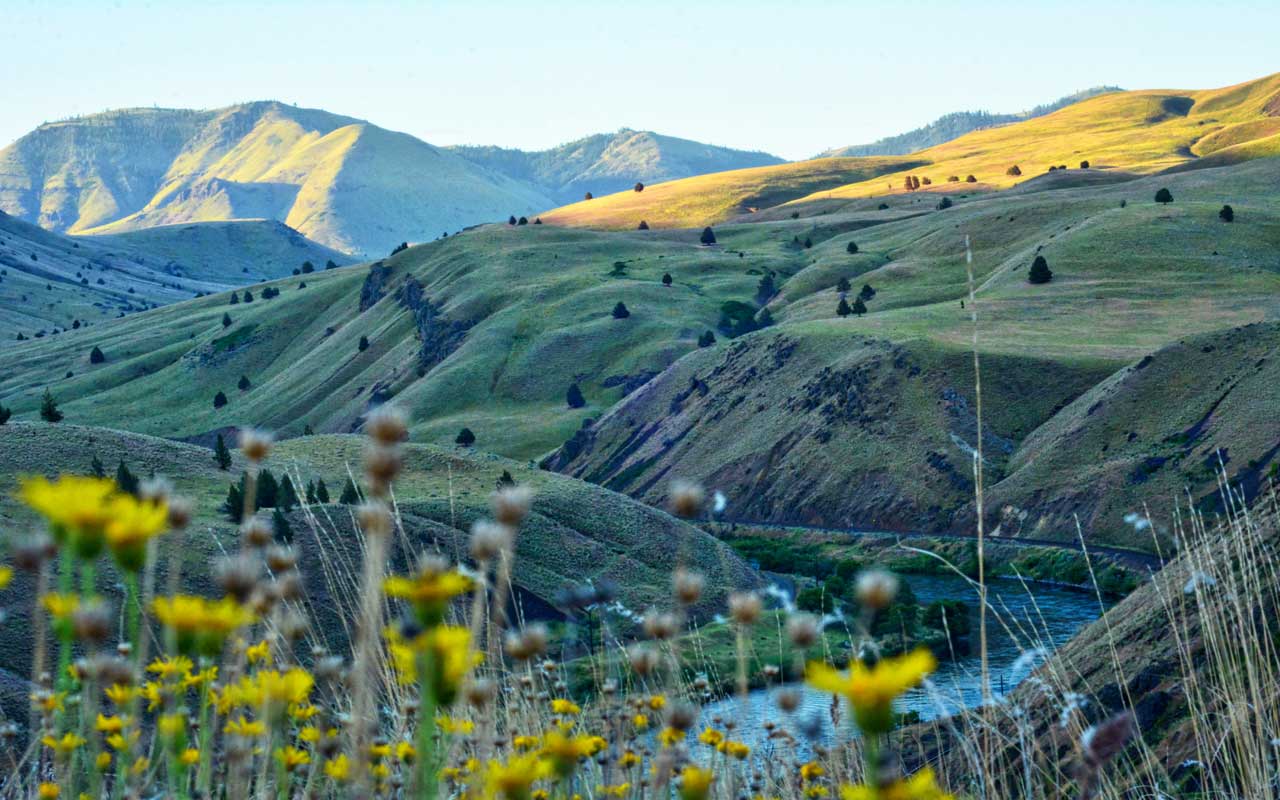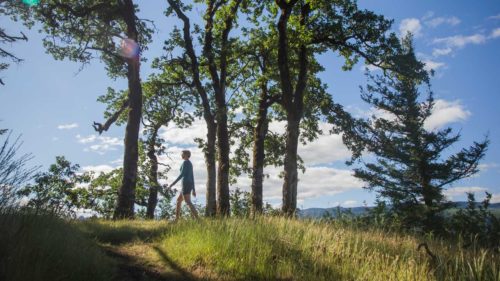Across Oregon, counties are working to follow the governor’s framework for phased reopening while also facing the threat and impact from seasonal wildfires. It’s important to stay local as guidance around travel may vary by county and in wildfire-affected areas.
For the latest updates on areas impacted by wildfire and evacuation zones, please review the maps and resources below:
- Wildfire Status and Maps: Check the location and status of large wildfires burning in Oregon at InciWeb, NW Interagency Coordination Center. or view the state’s real-time planning map below.
- Oregon Wildfire Resources: For information on how to stay safe and find aid, check out the statewide resources and news here.
- Road Conditions & Closures: Before you leave home, check tripcheck.com which shows real-time road conditions and closures. Please respect road closures as resources are limited.
- Smoke Conditions: Check Oregon Smoke Blog for wildfire smoke; DEQ’s Air Quality Advisories and Travel Southern Oregon’s Air Quality Dashboard.
- Tips for preventing human-caused wildfires: Find information on how you can prevent human-caused wildfires at Keep Oregon Green.
Recreation sites — from state and national parks to campgrounds and public boat launches — have all reported record-breaking visitation levels as Oregonians and visitors head outdoors after months of quarantining indoors. It is important to know what to expect before venturing into Oregon’s outdoors.
Face coverings are not required outdoors, however it is strongly recommended for nonvaccinated people and those with health risks to continue to wear face coverings in crowded outdoor areas. Be prepared to wear your face covering at trailheads and parking lots where it may be crowded. Face coverings are required indoors in some circumstances, including public transportation (airports, buses, trains, ride share, etc.) and at some businesses.
Visitors and locals need to be prepared before going to recreation sites and take care while there. Plan ahead and be flexible and patient.
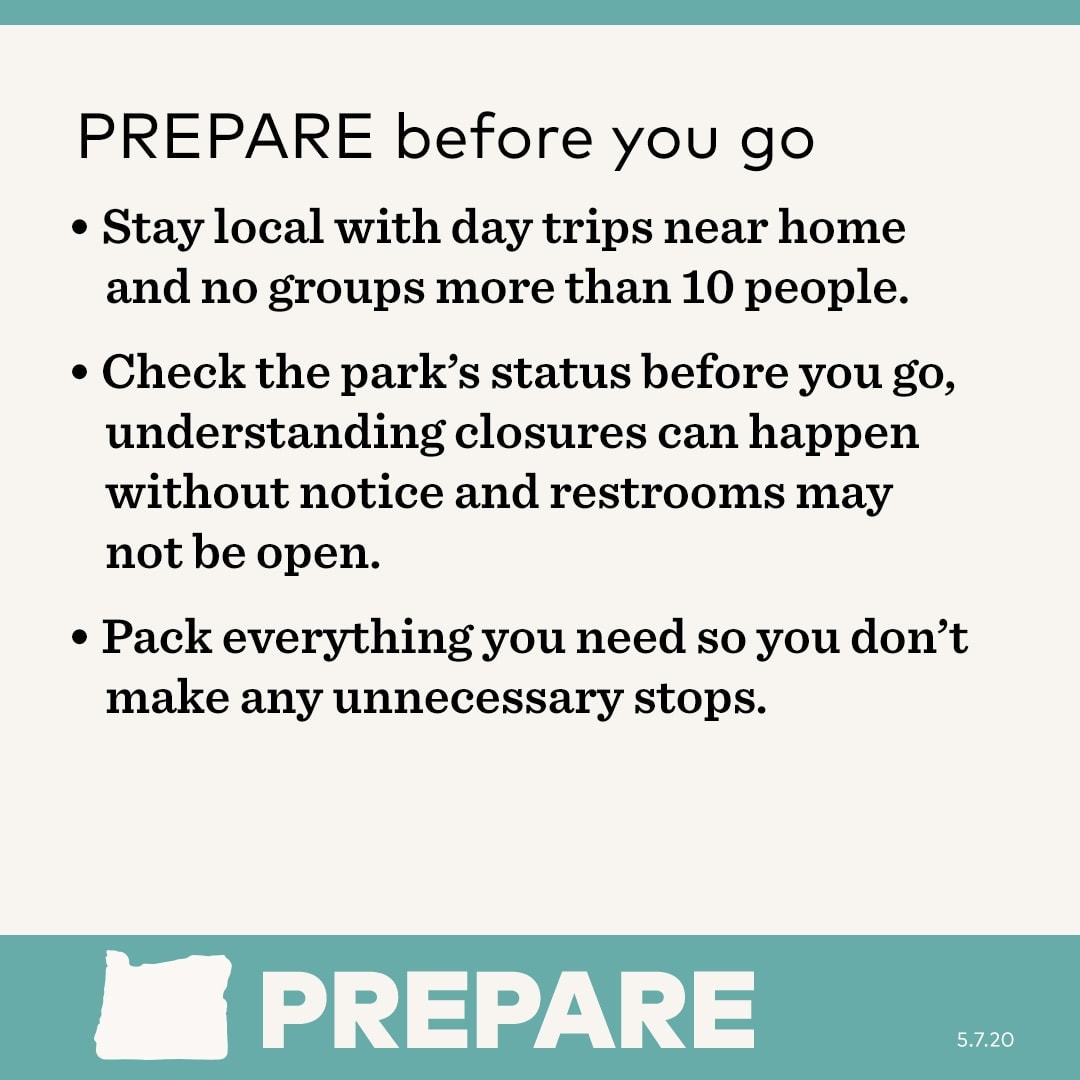
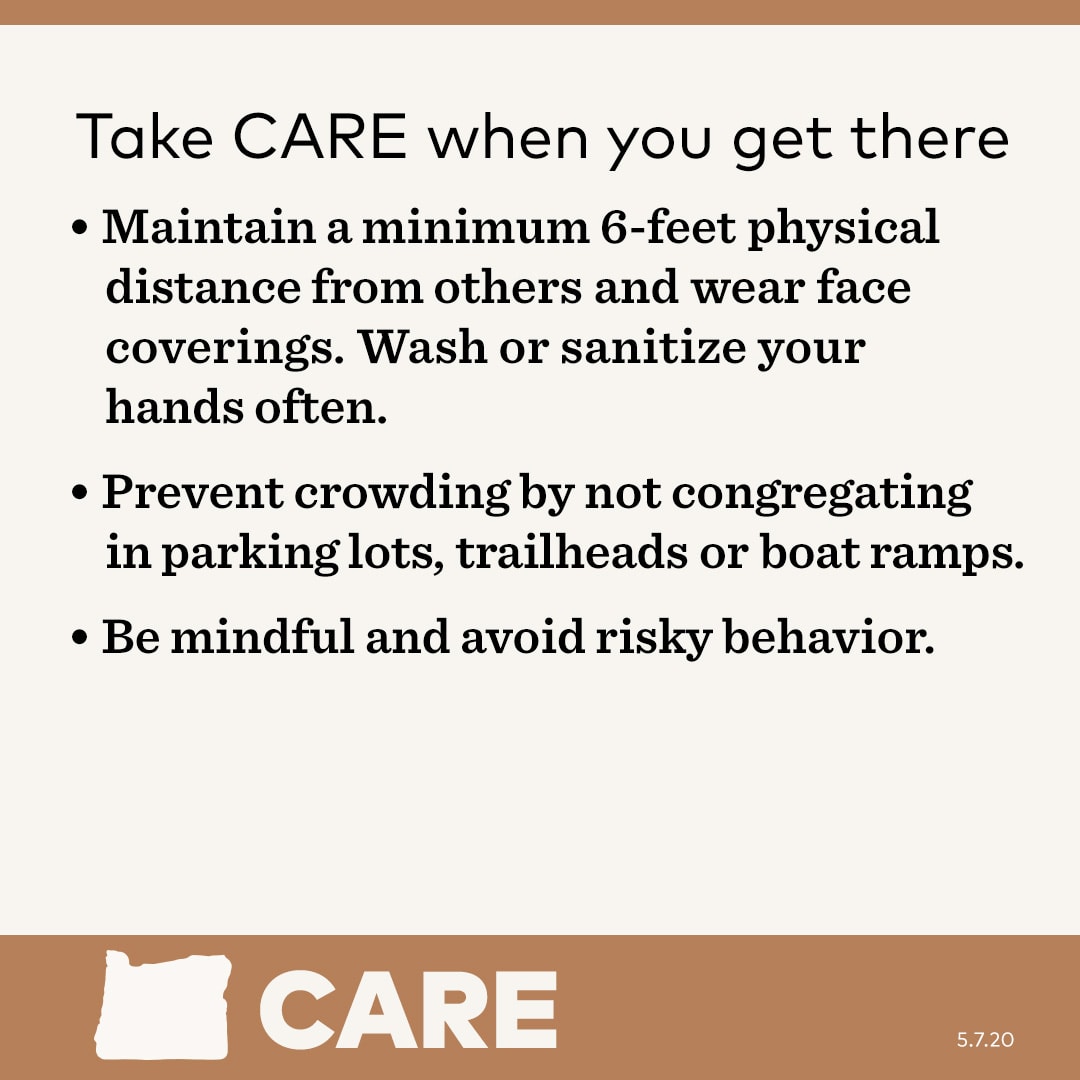
As counties reopen, Oregonians and visitors need to make informed decisions and review reopening guidance for the public. Respect closures, as they are indications an area is not safe for recreation and keep in mind that disregarding these restrictions can result in a fine.
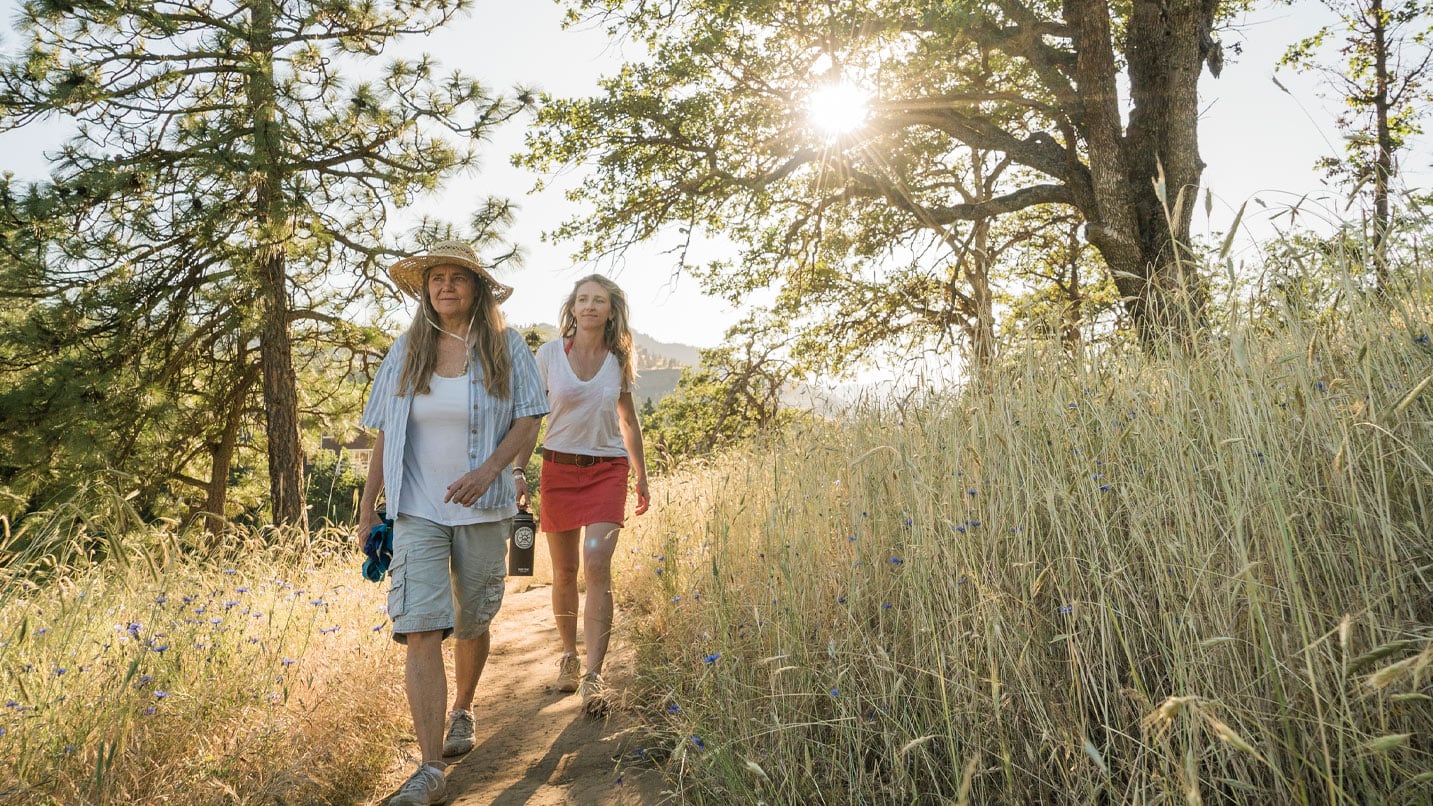
Here are key restrictions to keep in mind:
Oregon State Parks
Oregon State Parks announces closures for various reasons, including weather events, wildfire danger and damage that makes a recreation area unsafe to use. To know which sites are open, check out the park status map.
Additionally, even though outdoor parks and recreation areas are generally not affected by a county’s risk level, the COVID-19 pandemic has had an impact on the availability of some amenities and services. More information on what to expect at Oregon State Parks can be found here. For the most up-to-date information, check the agency’s notices page.
National Parks
Many National Parks Service sites in Oregon, including national monuments and historic trails, have reduced some of their services. Crater Lake National Park has some recreational access, including park entrance stations and several trails, while other access points, facilities and services remain closed. All three units of the John Day Fossil Beds National Monument (Sheep Rock, Painted Hills and Clarno) are open, however, visitor centers are only open on a limited basis. At the Oregon Caves National Monument & Preserve, trails and visitor centers are open; however, cave tours remain closed.
BLM lands
In some places in Oregon, the effects of the 2020 wildfires can still be seen. Officials have ended fire restrictions and public use restrictions on most Bureau of Land Management and USFS-managed lands. However, visitors should check the BLM website or call the local BLM office in charge of managing the area of interest for the latest information.
National forests
Check out the Forest Service’s interactive map for specific recreation site details and learn about national forest closures due to wildfires here.
State forests
Most lands managed by the Oregon Department of Forestry have reopened, including the Central Oregon Northeast Oregon districts. Some sites, such as Santiam State Forest’s popular Shellburg Falls, are closed. Know before you go by checking ODF’s Fire Restrictions page.
Wildlife areas
All wildlife refuges managed by the U.S. Fish and Wildlife Service, except for the Warm Springs National Fish Hatchery, are open to the public — however, they have varying operations so check the specific refuge’s website for details. Some wildlife areas managed by the Oregon Department of Fish and Wildlife are open for day-use fishing, hunting and wildlife viewing.
City parks
Most city parks and their playground equipment are open to the public. In the Portland area, Portland Parks & Recreation lists what’s open and what’s closed due to COVID-19. Parks and Trails in Bend remain open, but some facilities managed by Bend Park & Recreation are closed. Check your local city parks website for details.
County parks
Many county parks are open, though you’ll want to check their website to confirm. For example, Marion County parks are generally open, though some are closed due to wildfire damage. Metro parks and boat ramps remain open. Check with your local district for details; links to county parks are found in this story.
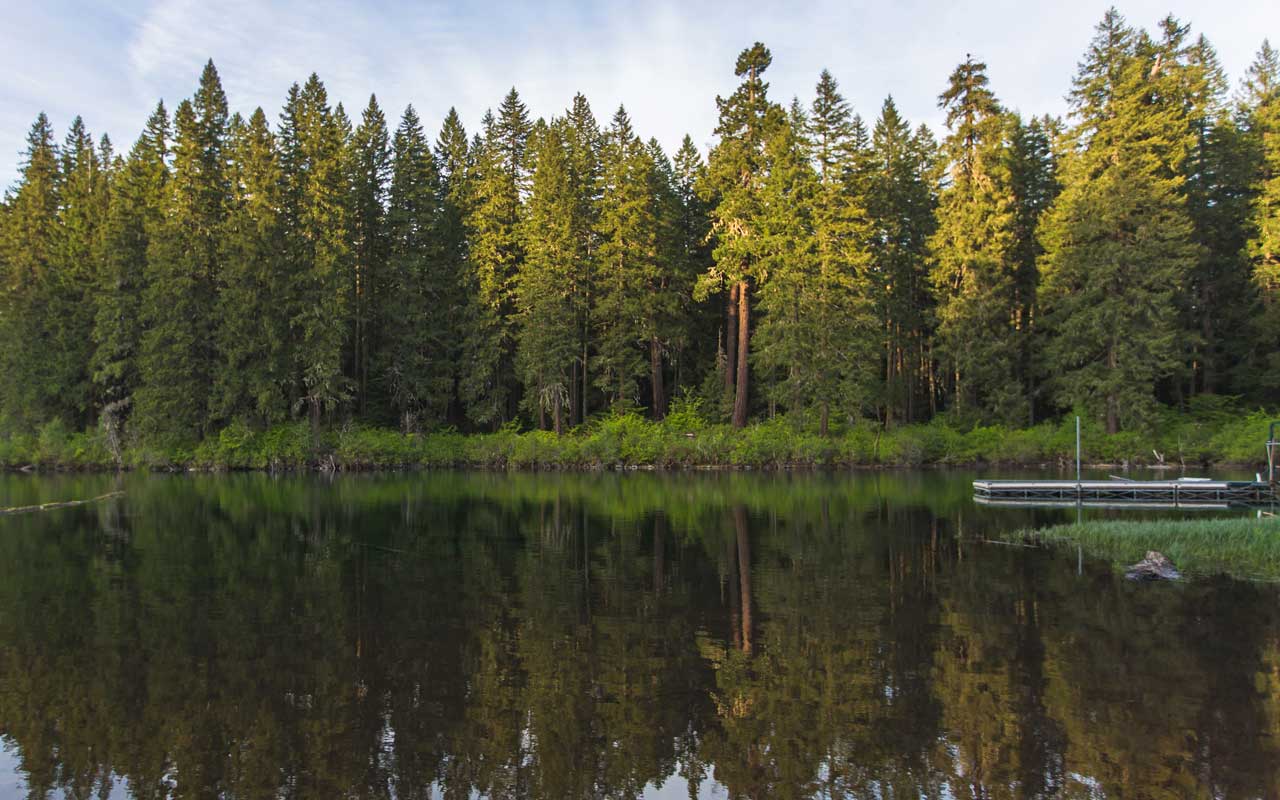
Columbia River Gorge
Some areas within the Columbia River Gorge National Scenic Area are currently closed or restricted. Review the recreation conditions report to confirm which sites are open or closed. Multnomah Falls is open, however the visitors center remains closed.
Coast shoreline
Most beach access points along the Oregon Coast are open. Check the Oregon State Parks map here for the latest details. While on the beach, visitors should follow social distancing guidelines — gather with your own household and remain at least 6 feet away from others. Coastal cities have witnessed an influx of visitors in the summer, so be prepared for the potential for crowding.
Fishing and hunting
Recreational hunting and fishing and recreational crabbing is open in Oregon bays, estuaries, and the ocean. Bay clamming, too, is allowed all along the coast and you can find locations to dig for bay clams here. Make sure to get information on crabbing and clamming licenses.
Razor clamming, however, remains closed on the North Oregon Coast and is only open from the south jetty Siuslaw River in Florence south. Restrictions on clamming and crabbing are related to toxin levels, so before heading out to catch your dinner visit ODA Recreational Shellfish page to learn about any restrictions.
Officials ask resident hunters and anglers not to travel far due to concerns of spreading COVID-19 and placing burdens on rural communities. Many day-use reservoirs and boat ramps managed by the U.S. Army Corps of Engineers are open, though there are some parks with limited access and camping closures.
Waterplay
Most boat ramps across the state are open, but double check the Oregon State Marine Board’s boating access map before venturing out. Keep in mind that even though a ramp may be open to launching, nearby restrooms may not be in service. Plan accordingly with hand sanitizer, toilet paper and if possible a personal porta-potty or bucket. Many pump-out/dump stations are operational. Remember to wash your hands frequently.
For an enjoyable carefree experience on the river, consider booking a rafting guide. Outfitters follow safety guidelines to keep rafters safe.
Additional Resources
Various agencies operate and maintain multiple recreation sites across the state. Please check their websites to access the most current information around recreation sites.
- Portland General Electric – View information on sites like Timothy Lake, North Fork Boat Launch, and Clackamas River access sites.
- US Army Corps of Engineers – Find information on Bonneville, John Day, The Dalles Locks and Dams, Lost Creek Lake and multiple sites in the Willamette Valley.
- PacifiCorp – Access information on Keno and JC Boyle Reservoirs, Wallowa Park, North Fork Park, North Umpqua River and more.
- Idaho Power – Updates on recreation sites along the Oregon / Idaho border including the Hells Canyon area.
